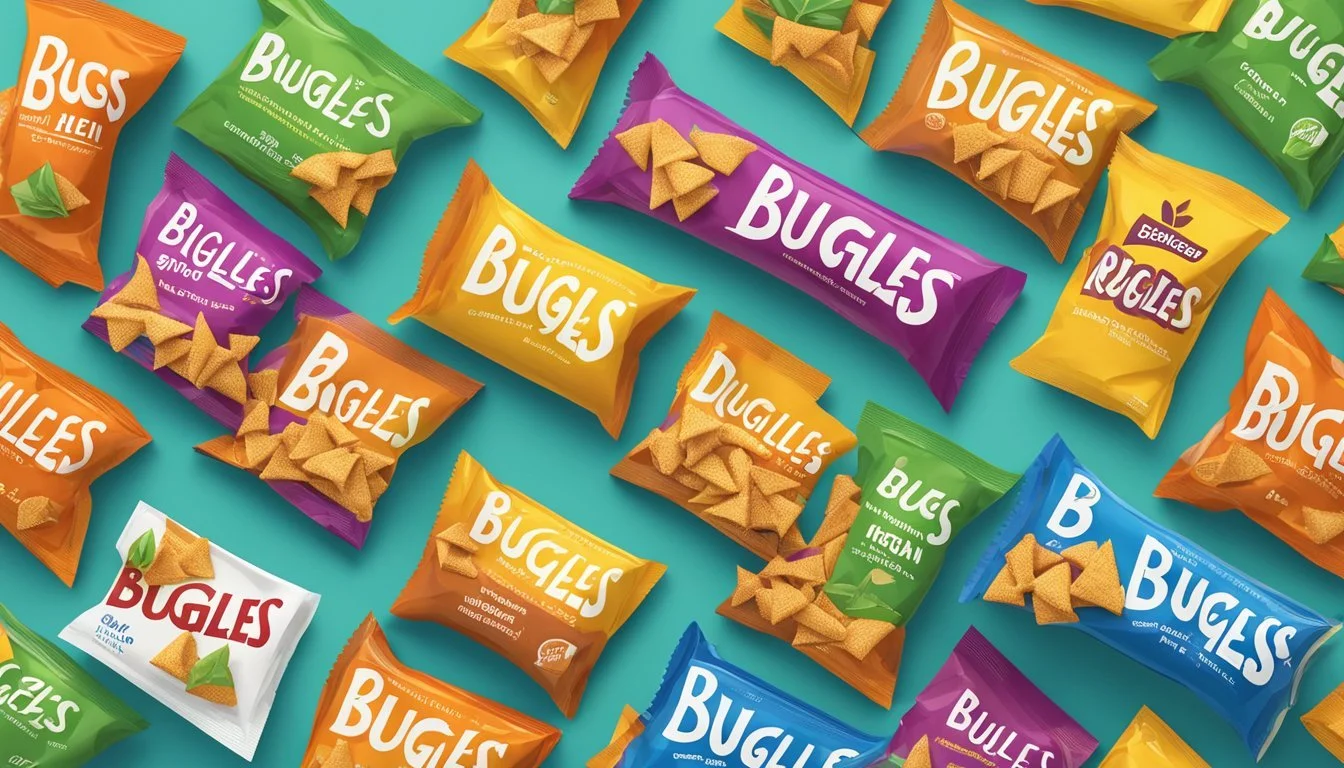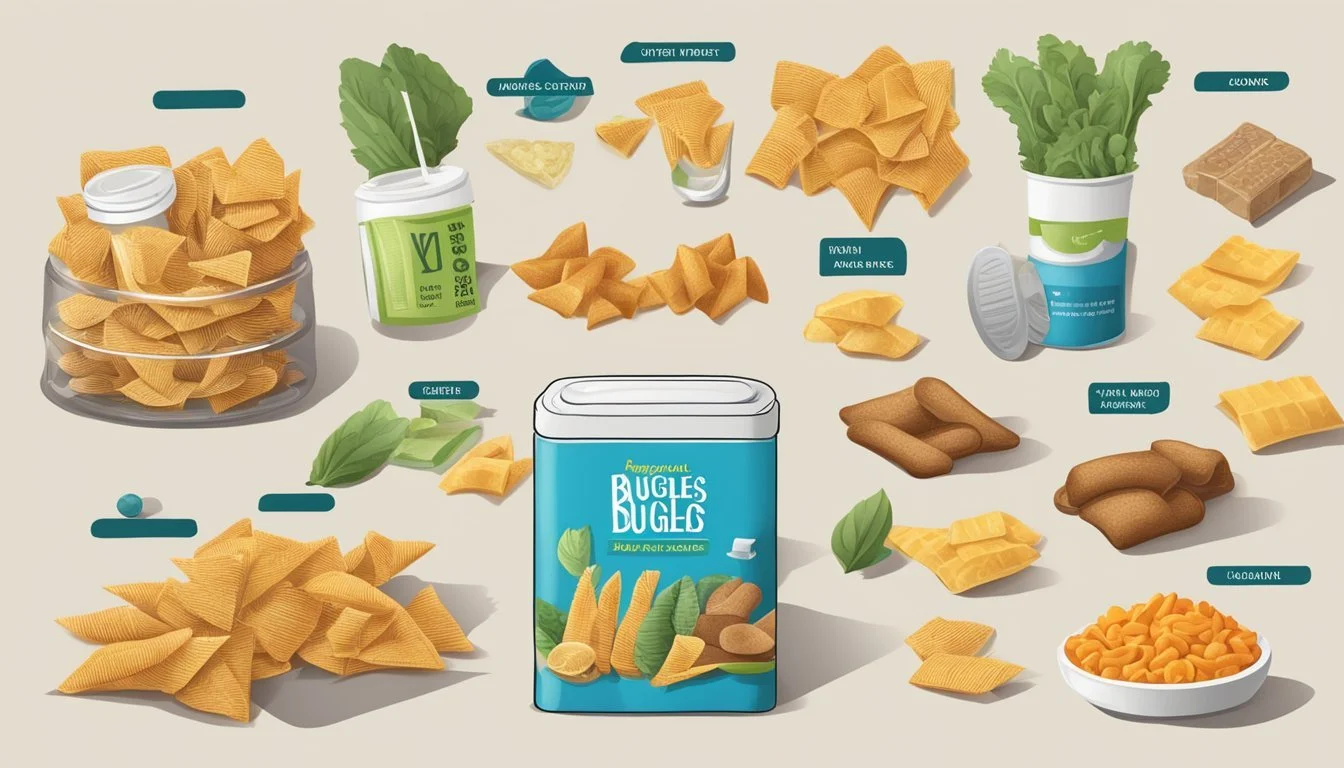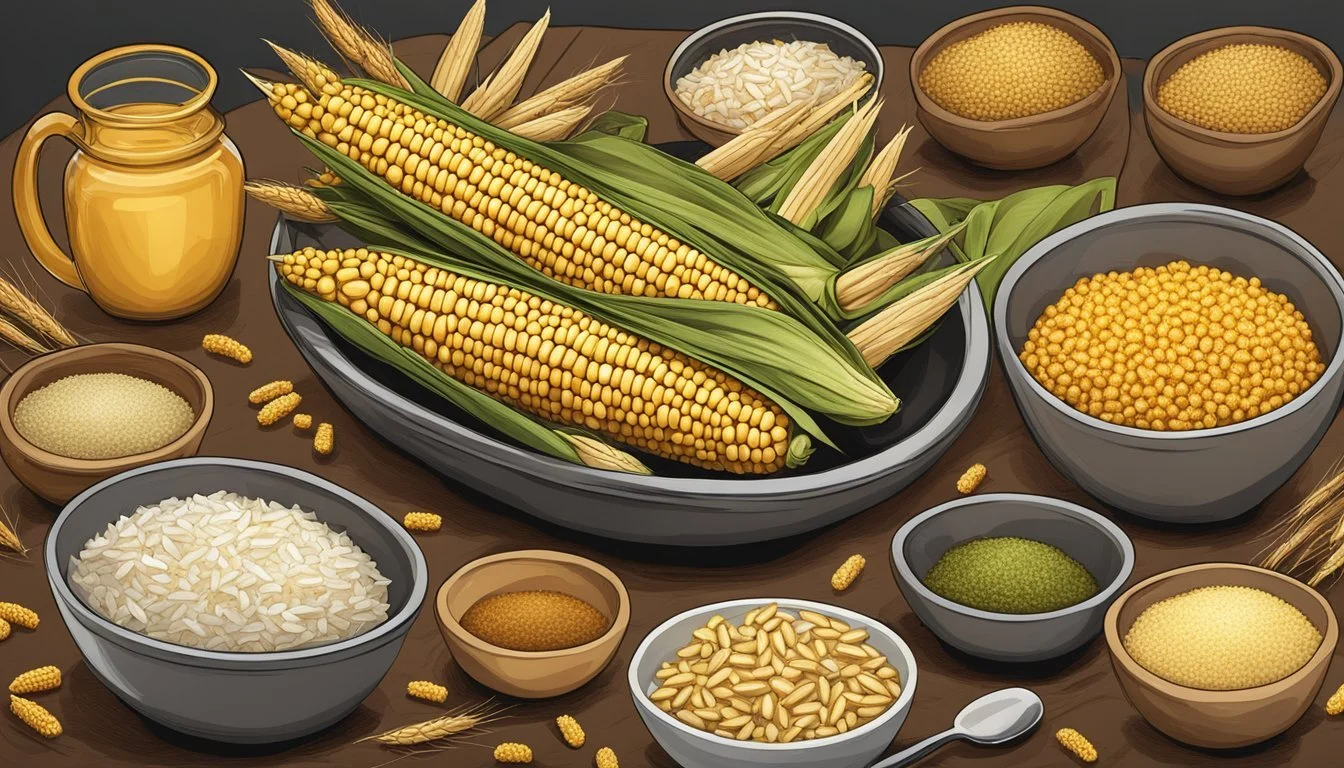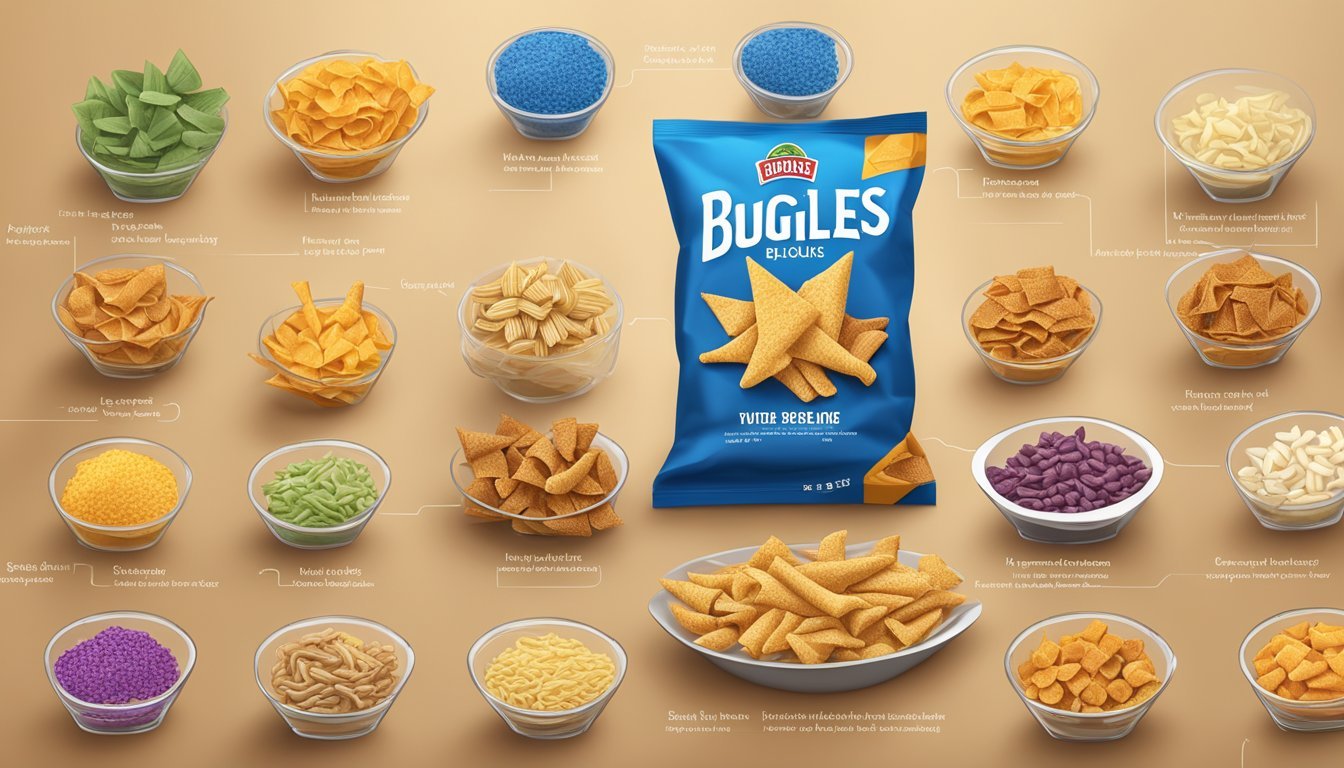Are Bugles Vegan?
Unveiling Their Dietary Status
Assessing whether a popular snack like Bugles can be included in a vegan diet begins with understanding what constitutes a vegan product. A food item is considered vegan if it contains no animal products or byproducts. For people adhering to a plant-based lifestyle, scrutinizing ingredients is a critical step in determining whether a product aligns with their dietary choices.
Bugles, the cone-shaped corn snacks, have often been subject to scrutiny by vegans due to their ingredients. The original Bugles flavor is made primarily from cornmeal, alongside oils, sugar, salt, and preservatives. For vegans, ingredients such as these, which are plant-based or synthetic, are typically acceptable. However, vegans vary in stringency; some may avoid products with refined sugar or that carry allergen warnings for milk due to potential cross-contamination or production practices.
Flavors beyond the original tend to incorporate additional ingredients, some of which include milk derivatives, making those variations non-vegan. As such, vegans must review the flavors' components carefully. Some Bugles flavors, like the BBQ varieties and Churro, have been identified as vegan-friendly. Yet, it's essential to note that the use of natural flavors and the potential inclusion of palm oil—ingredients whose vegan status can be contentious—should be taken into account by those with more restrictive dietary ethics.
Bugles Brand Overview
Bugles are a distinctive snack produced by General Mills, known for their unique cone shape and crunchy texture. They emerged on the market in 1964 and have since become a popular choice among consumers who enjoy textured and flavorful snack options.
The brand has historically provided a variety of flavors, among which the Original Bugles are noteworthy for not containing animal-derived ingredients, making them a suitable option for vegans. General Mills ensures that the basic composition of Original Bugles remains consistent, typically including degermed yellow corn meal, vegetable oil, sugar, and salt.
It's important to recognize that while the original flavor adheres to vegan standards, other flavors might not. Ingredients such as milk, whey, or cheese powder, commonly found in flavored snacks, are sourced from dairy, thus making certain varieties of Bugles unsuitable for a vegan diet. For those interested in vegan options, here's a brief overview of Bugles offerings:
Vegan: Original
Non-Vegan: Nacho Cheese, Ranch, Caramel, Chocolate Peanut Butter and potentially other flavored Bugles due to milk derivatives.
Given that Bugles are produced in facilities alongside non-vegan items, cross-contact with non-vegan ingredients can occur. Consumers with strict dietary preferences should be mindful of this fact when choosing their snacks. Despite these considerations, Bugles maintain a notable presence in the snack market, offering a product that caters to both traditional preferences and vegan-friendly choices within their product range.
Understanding Vegan Diets
Vegan diets exclude all animal products, emphasizing plant-based ingredients while avoiding common non-vegan items frequently found in various food products.
Definition of Veganism
Veganism is a dietary and lifestyle choice that eschews the use of animal products in all forms. Individuals adopt this practice not only for health reasons but also for ethical considerations, aiming to reduce animal exploitation and environmental impact. A vegan lifestyle means one commits to consuming only plant-based foods and avoiding items derived from animals, whether it is meat, dairy, eggs, or even honey.
Common Non-Vegan Ingredients
When examining food products, vegans must be vigilant about ingredients that are not in line with their dietary choices. A prevalent non-vegan component is dairy, which includes products such as milk, cheese, butter, and whey. Other animal-derived additives to watch out for include gelatin, casein, and certain food coloring derived from insects. A quick guide to some common non-vegan ingredients includes:
Dairy: Milk, cheese, butter, yogurt
Eggs: Whole eggs, egg whites, egg powder
Animal Fats/Oils: Lard, tallow
Other Additives: Gelatin, casein, carmine, shellac
This awareness ensures that individuals following a vegan diet can make informed decisions about the foods they consume and maintain adherence to their vegan principles.
Bugles Ingredients Analysis
Exploring the vegan status of Bugles requires an examination of the ingredients within the original and flavored varieties. The analysis will focus on the specific components that determine whether these popular snacks are suitable for a vegan diet.
Original Bugles Ingredients
The main ingredients for Original Bugles include degermed yellow corn meal, which is processed from dried corn, and a combination of oil, sugar, salt, and baking soda. Additionally, they contain BHT (butylated hydroxytoluene), a preservative.
Degermed Yellow Corn Meal: Main component.
Oil: Often includes palm oil, a controversial vegan ingredient due to environmental concerns.
Sugar: Used for sweetness; some vegans may avoid due to the potential use of bone char in processing.
Salt: Added for flavor.
Baking Soda: A leavening agent.
BHT: A synthetic antioxidant used to preserve freshness.
Flavored Bugles Varieties
Flavored varieties raise the question of vegan-friendly status due to potential non-vegan ingredients. Most of the flavored Bugles, such as Nacho Cheese, Ranch, and Caramel, explicitly include milk or milk derivatives, classifying them as non-vegan. However, all flavors come with a cross-contamination risk as they are produced on equipment that may also process milk products.
Original Flavor: Typically vegan-friendly.
Hot Buffalo, Churro Flavors: May be vegan-friendly; check individual packaging for confirmation.
Nacho Cheese, Ranch, Caramel: Contain non-vegan ingredients.
Cross-Contamination: All flavors may contain traces of milk.
Flavors: Each variety introduces additional ingredients that require scrutiny.
Specific Ingredients of Concern
Evaluating whether Bugles are vegan requires a careful look at specific ingredients that could be of animal origin or are controversial among the vegan community.
Dairy and Animal-Derived Items
Some Bugles flavors contain dairy ingredients, which are not suitable for vegans. These dairy components can include:
Milk: Often found in flavored varieties such as cheddar or ranch.
Whey and Whey Powder: A by-product of cheese production, whey is common in many flavored snacks.
Buttermilk and Buttermilk Powder: Used for a tangy flavor in some Bugles, it's sourced from dairy.
Modified Romano Cheese: Found in certain flavors, this cheese is made from cow's milk.
Dried Sour Cream: Another dairy product that might be listed in the ingredient list.
Cultures: These are sometimes dairy-based and used in cheese-flavored snacks.
Controversial Additives
Even if a Bugles flavor does not contain outright non-vegan ingredients, there are additives which raise concern:
Sugar: This might be refined using bone char from animal bones, which is a concern for some vegans.
BHT (Butylated Hydroxytoluene): An additive used to preserve freshness. Its vegan status might be controversial due to potential animal testing in the past.
Palm Oil: While plant-based, the production of palm oil has been linked to environmental concerns and ethics that some vegans find objectionable.
By checking for these specific non-vegan ingredients and controversial additives, consumers can make informed decisions aligned with their vegan lifestyle.
Analyzing Bugles Flavors for Vegan Suitability
This section carefully examines the ingredients across various Bugles flavors to determine which are suitable for a vegan diet.
Original and Salt Flavor
Original Bugles are typically considered vegan-friendly as they are made with corn, vegetable oils (which may include coconut, palm, and soybean oil), salt, and sugar. It's important to check for cross-contamination warnings since they may be produced on equipment that also processes milk. Salt Flavor follows a similar ingredient profile and typically does not contain animal-derived ingredients.
Caramel, Chocolate Peanut Butter, and Sweet Flavors
Sweet flavors like Caramel or Chocolate Peanut Butter Bugles often contain non-vegan ingredients. For instance, Caramel Bugles may include dairy products like milk solids, while Chocolate Peanut Butter varieties could contain dairy ingredients such as milk solids and whey.
Savory Flavors
Savory Bugles flavors vary widely in vegan compatibility. Nacho Cheese and Ranch are not suitable for vegans because they contain dairy products like dried cheddar cheese and buttermilk powder. Other seasonings like garlic powder, onion powder, and spices generally don't include animal products, but it is important to look for hidden ingredients such as whey, casein, or other milk derivatives.
Discontinued and Limited Edition Flavors
For discontinued and limited edition flavors such as Hot Buffalo or Churro, checking the ingredient list is crucial. Discontinued flavors may resurface with different recipes, and limited editions might use non-standard ingredients. Hot Buffalo Bugles have typically contained dairy, indicated by ingredients like buttermilk. Churro Bugles might be vegan, depending on whether the "natural flavor" listed includes animal-derived components.
Nutritional Profile and Health Considerations
When examining the nutritional profile and health considerations of Bugles, it is essential to take a close look at both the caloric value and nutrient content of these corn snacks, and also to understand the implications of various preservatives and food additives they contain.
Caloric and Nutrient Content
Bugles are a type of corn snack made primarily from degermed yellow cornmeal. The caloric content of these crunchy chips is comparable to other snacks in their category. A typical serving size of Bugles, which is about 1 ounce (28 grams), contains approximately:
Calories: 150
Total Fat: 8g
Saturated Fat: 1g
Trans Fat: 0g
Cholesterol: 0mg
Sodium: 310mg
Total Carbohydrates: 18g
Dietary Fiber: <1g
Sugars: 2g
Protein: 2g
This snack's simple composition renders it vegan-friendly, given that the plain varieties do not incorporate any animal-derived ingredients like milk or whey. However, certain flavors, like Modified Romano Cheese, are not vegan due to the presence of milk ingredients in the seasoning.
Preservatives and Food Additives
Preservatives and food additives extend the shelf life of products and maintain their texture and flavor. One common preservative found in Bugles is Butylated Hydroxytoluene (BHT). Used to preserve the freshness of the snack, BHT is a synthetic compound that can also be found in cosmetics and pharmaceuticals.
The ingredient label should always be examined for the presence of non-vegan additives. Varieties of Bugles that are not vegan often contain additives linked to dairy products, such as:
Modified Romano Cheese: Derived from cow's milk, it includes cheese cultures, enzymes, and whey.
Whey: A by-product of cheese-making, which is not suitable for those following a vegan diet.
In summary, while original and some other flavors of Bugles are considered vegan due to their lack of animal-based ingredients, individuals should scrutinize the label for additives and preservatives that may not align with a vegan lifestyle or their personal health considerations.
Labeling and Packaging
When assessing whether Bugles are vegan, consumers should meticulously examine the product's labeling. The ingredients label provides essential information, listing items such as corn, various oils (including coconut oil), sugar, salt, and preservatives. Notably, freshness is preserved by BHT (Butylated Hydroxytoluene), which is a synthetic antioxidant.
Label accuracy is paramount, especially for those following a vegan diet. The European Union mandates that vegan products are clearly identified with a visible statement and certified with a vegan logo. Although not all regions have such stringent requirements, this practice aids consumers in making informed decisions.
For Bugles specifically, the situation is somewhat complex. Original Bugles and several other flavors are labeled as vegan due to their ingredients. However, the presence of the statement "May Contain Milk" on packaging indicates potential cross-contamination, as all flavors are produced with the same equipment.
To assist vegan consumers, a comprehensive list juxtaposing vegan and non-vegan flavors can be advantageous:
Vegan Flavors:
Original Bugles
BBQ Varieties
Non-Vegan Flavors:
Those with explicit animal-derived ingredients.
In summary, the packaging of Bugles provides crucial details on ingredients and potential allergens. While certain flavors of Bugles adhere to vegan standards, the cross-contamination risk is flagged, allowing individuals to choose according to their dietary preferences and restrictions.
Manufacturing Processes
When discussing the vegan status of Bugles, it's essential to consider the specifics of their manufacturing processes. These processes play a crucial role in determining whether the final product can be classified as vegan, particularly concerning the risks of cross-contamination with non-vegan substances such as milk or whey.
Cross-Contamination Risks
In the production facilities where Bugles are made, there is a possibility of cross-contamination with animal-derived ingredients. This is primarily due to the fact that the same equipment is used to manufacture different flavors, some of which may contain milk or whey. While the Original Bugles are not formulated with non-vegan ingredients, the shared equipment means that traces of milk could theoretically come into contact with the vegan-flavored Bugles.
For those with milk allergies or strict dietary restrictions, this cross-contamination risk is significant. Consumers concerned with even minor traces of non-vegan ingredients might need to avoid Bugles due to these manufacturing practices. It is important for consumers to be aware that while Bugles may not directly contain non-vegan ingredients, the shared equipment used in production facilities introduces a variable that may affect the vegan status of their snack.
Vegan Alternatives to Bugles
For those seeking vegan-friendly snack alternatives to Bugles, the market offers both homemade recipes and commercial options that align with vegan ethics. These alternatives ensure that vegans can enjoy similar crunchy treats without compromising their dietary choices.
DIY Recipes
Homemade Vegan Bugle-Style Cones:
One can create a simple mix of dry ingredients including cornmeal, flour, baking soda, and salt. To replicate the iconic Bugle shape, a cone-shaped mold is required. The wet ingredients generally consist of vegetable oil and water. After combining, the dough is shaped, baked until crispy, and seasoned with a combination of nutritional yeast, garlic powder, and onion powder for a cheese-like flavoring without dairy.
Baked Chickpeas:
Another alternative involves roasting chickpeas in the oven after tossing them in olive oil and seasoning with salt, nutritional yeast, or other spices. This results in a protein-rich, crunchy snack.
Commercial Alternatives
The market has responded to the rise in veganism by offering a variety of vegan-friendly snacks that could serve as Bugles alternatives. The following are some notable options:
Brand Product Noteworthy Features Hippeas Organic Chickpea Puffs High in protein and fiber, gluten-free Beanfields Bean Chips Made from beans, full of fiber and protein, comes in various flavors Luke's Organic Multigrain & Seed Chips Non-GMO, gluten-free, organic ingredients
These products are typically available at health food stores, larger supermarkets, or online shops that cater to vegan customers.
Ethical and Environmental Considerations
When evaluating whether Bugles are vegan, both ethical and environmental aspects come into play. Ethically, veganism encompasses a lifestyle that seeks to exclude, as far as possible, all forms of animal exploitation and cruelty. This principle extends to food, clothing, or any other purpose.
Ingredients to Scrutinize:
Palm Oil: Often found in processed foods, the production of palm oil is associated with deforestation, habitat destruction, and threats to wildlife. Bugles containing sustainably sourced palm oil or alternative oils would align more closely with vegan ethics.
Artificial Flavors/Colors: Occasionally, these may be derived from animal sources. Verification is necessary to ensure they meet vegan standards.
Environmental Impact:
Agriculture: The ingredients in Bugles and their agricultural processes contribute to the product's overall environmental footprint. Vegan consumers often seek products that minimize this impact.
Packaging: The environmental consideration extends to the packaging of Bugles, favoring materials that are recyclable or compostable, thus reducing waste.
Vegan Certification: Products that have undergone a vegan certification process provide an additional layer of assurance regarding their ingredients and cruelty-free status.
In summary, the vegan consumer examines not only the absence of animal derivatives in Bugles but also considers the broader ethical and environmental implications of their production.










